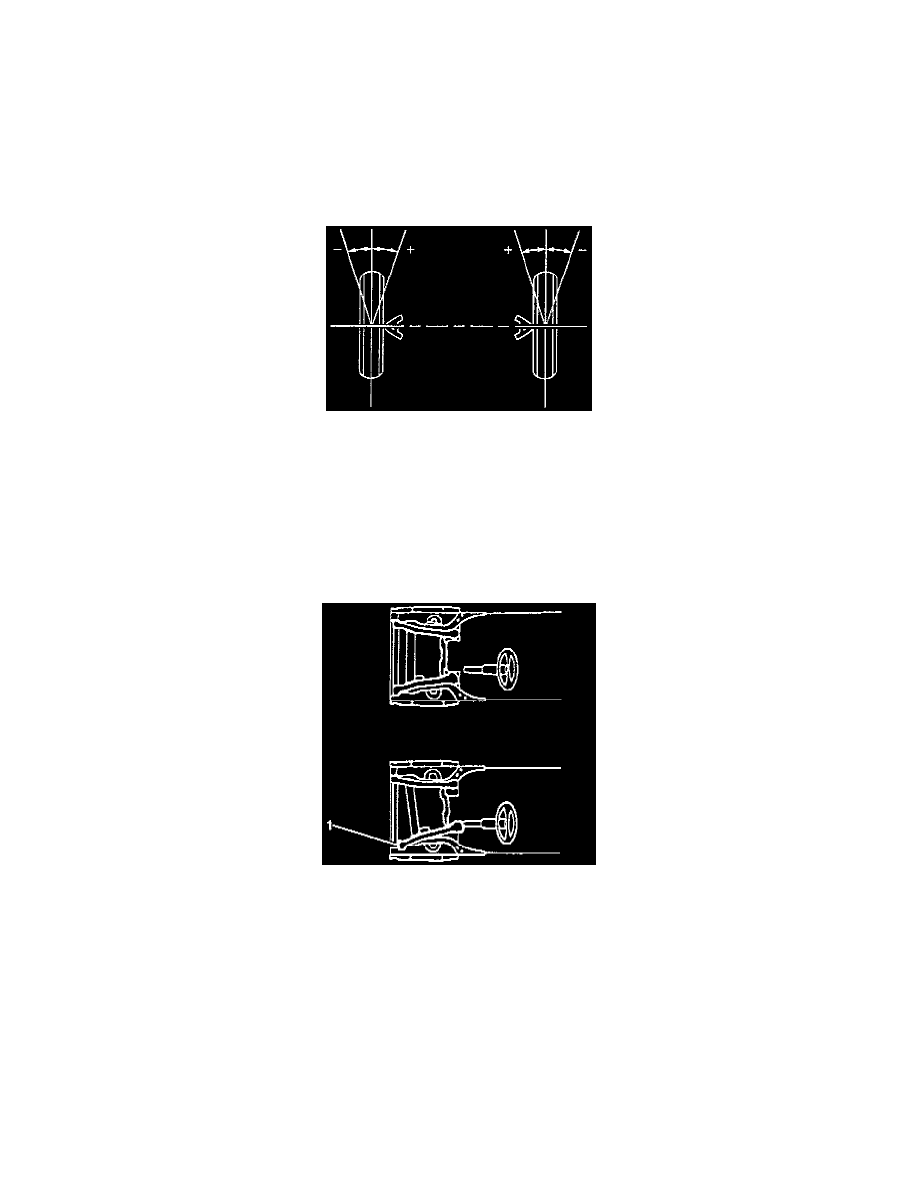Intrigue V6-3.8L VIN K (1998)

positive (+). When the wheel tilts inward at the top, the camber is negative (-). The amount of tilt is measured in degrees from the vertical. Camber
settings influence the directional control and the tire wear.
Too much positive camber will result in premature wear on the outside of the tire and cause excessive wear on the suspension parts.
Too much negative camber will result in premature wear on the inside of the tire and cause excessive wear on the suspension parts.
Unequal side-to-side camber, of a 1 degree or more, will cause the vehicle to pull or lead to the side with the most positive camber.
Toe Description
Toe is a measurement of how much the front and/or rear wheels are turned in or out from a straight-ahead position. When the wheels are turned in, toe is
positive (+). When the wheels are turned out, toe is negative (-). The actual amount of toe is normally only a fraction of a degree. The purpose of toe is to
ensure that the wheels roll parallel.
Toe also serves to offset the small deflections of the wheel support system that occur when the vehicle is rolling forward. In other words, with the vehicle
standing still and the wheels set with toe-in, they tend to roll parallel on the road when the vehicle is moving.
Improper toe adjustment will cause premature tire wear and cause steering instability.
Frame Misalignment Description
The frame is a rubber isolated sub-frame in the front of the vehicle. The frame supports the engine and the transaxle. The frame provides the mounting
point for the front suspension lower control arms. The frame in the upper illustration is normal. Any misalignment of the frame, as shown, causes a
misalignment of the front wheels. Movement of the frame usually causes an increase in caster on one side of the vehicle and a decrease in caster on the
other side of the vehicle. This can cause the following conditions:
^
Cause the exhaust system to bind up
^
Cause problems with the control cables
^
Cause unacceptable noises and/or sounds
Check the frame for any obvious damage. In the illustration, the frame (1) is moved toward the rear. The left lower control arm and the left ball joint are
moved toward the rear, changing the caster on the left side only. The top of the strut cannot move because the strut is mounted to the strut tower in the
body.
Setback Description
